Durham, N.C. Sinkhole Leads to Stormwater System Rehabilitation
Durham, N.C. | Property Management | Stormwater System Repairs
Overview:
The tenant on this property noticed a depression that opened to the ground below and notified the property owners. Understanding the gravity of the situation, the property owners turned to AQUALIS to inspect and remediate the stormwater system.
Problem:
This commercial property is beside a nature area with trails. Between the buildings on the property edge and the trail is a large slope with a 35-foot elevation change. The property owners were alerted by tenants that a small depression was surfacing behind the building. The property owners called AQUALIS for a geological survey of the area and understand the cause of the issue. During surveillance, additional depressions along the slope were found. Once it was decided the sinkholes were due to failing stormwater infrastructure below, AQUALIS began working quickly as the repairs needed were extensive.
The sinkholes, coupled with severe erosion along the slope, meant extensive damage had occurred to the stormwater infrastructure below. The slope was eroded so severely that the stormwater infrastructure was exposed. Mature trees and the connected root systems prevented the slope from completely collapsing.
This system failed due to multiple circumstances. The mature trees were suspected to be involved in the decay of the infrastructure as the root systems were extensive and entangled around the pipes. However, the junction boxes and pipelines were dangerously aged and not regularly maintained, shortening the lifespan of the infrastructure. Severe slopes often exacerbate erosion as water rapidly gains speed, loosening sediment. Additionally, the surrounding soils were unstable and not sufficiently compacted meaning they were highly susceptible to erosion and potential sinkholes. Together, all of these factors led to serious decline of the stormwater system on this property.
Stormwater pipes are continually exposed to rushing water which can quickly erode minor issues into large issues. Regularly maintaining and inspecting your system ensures any small issue is found and repaired before it can compound. Without management for years, this system began to fail initially at a slow pace that later became exponential. Joints within the pipelines and subsequent connections to junction boxes are especially vulnerable to failures as any imperfections or fissures will be worsened by fast moving water. Sinkholes often occur due to this phenomenon. Stormwater flowed past a small imperfection in the connection of two stretches of pipe and began to break down the area overtime. Eventually, the pipe separated allowing water to be diverted, which disrupted the soil around the pipeline. Similarly, roots compromised the pipeline allowing the stormwater inside to divert from the pipe. With mature trees, unstable soils and a severe slope to quicken the flow of water, multiple catalysts for decay were present.



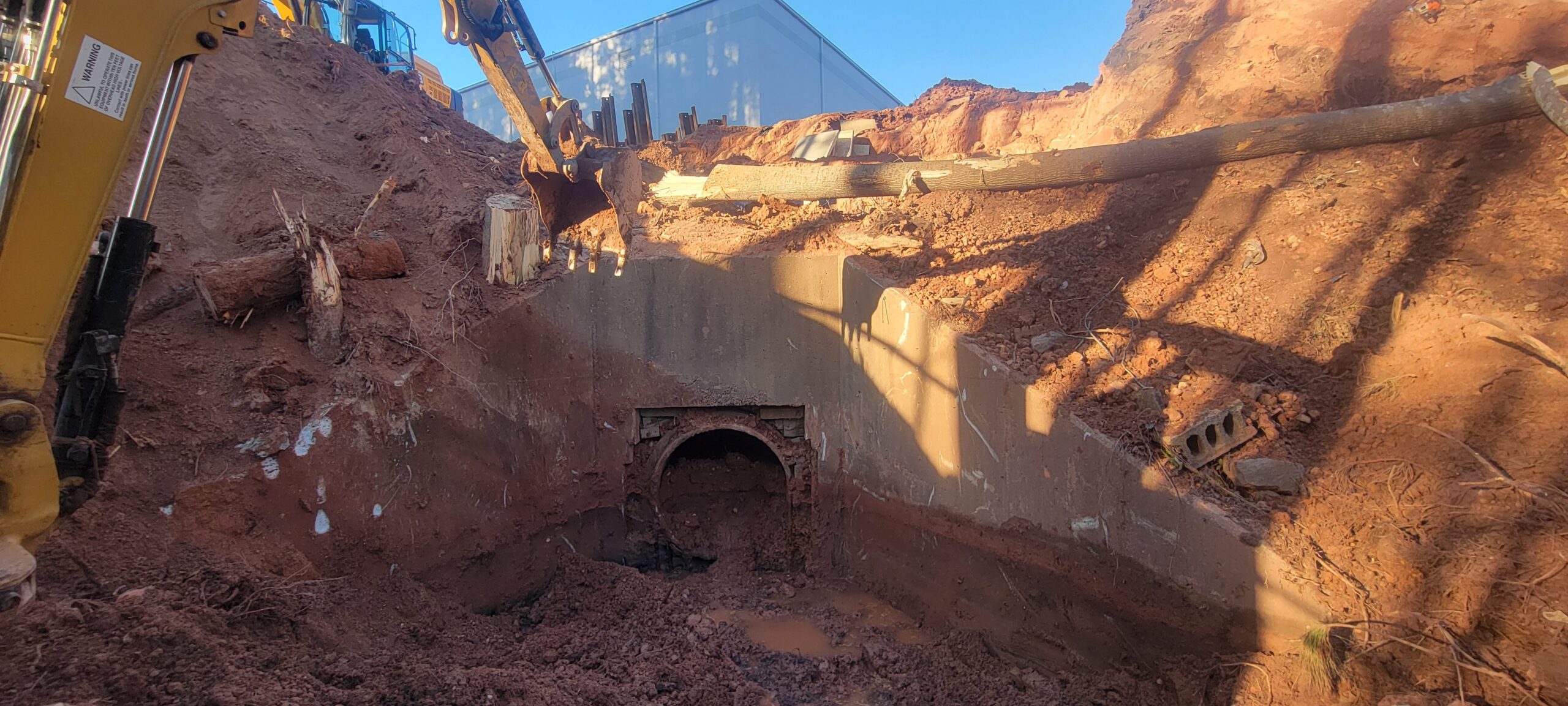
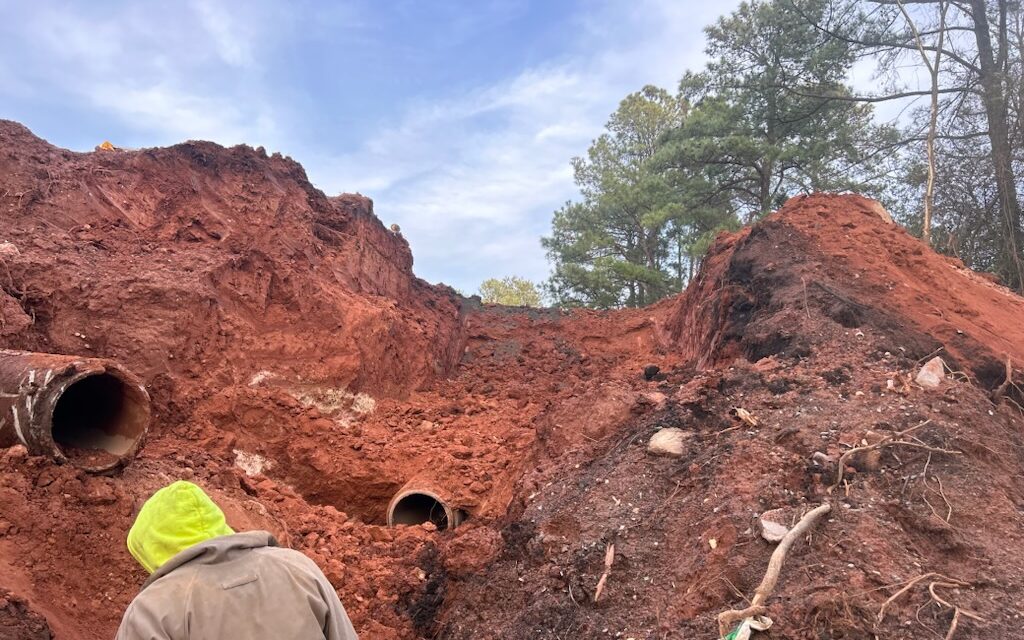
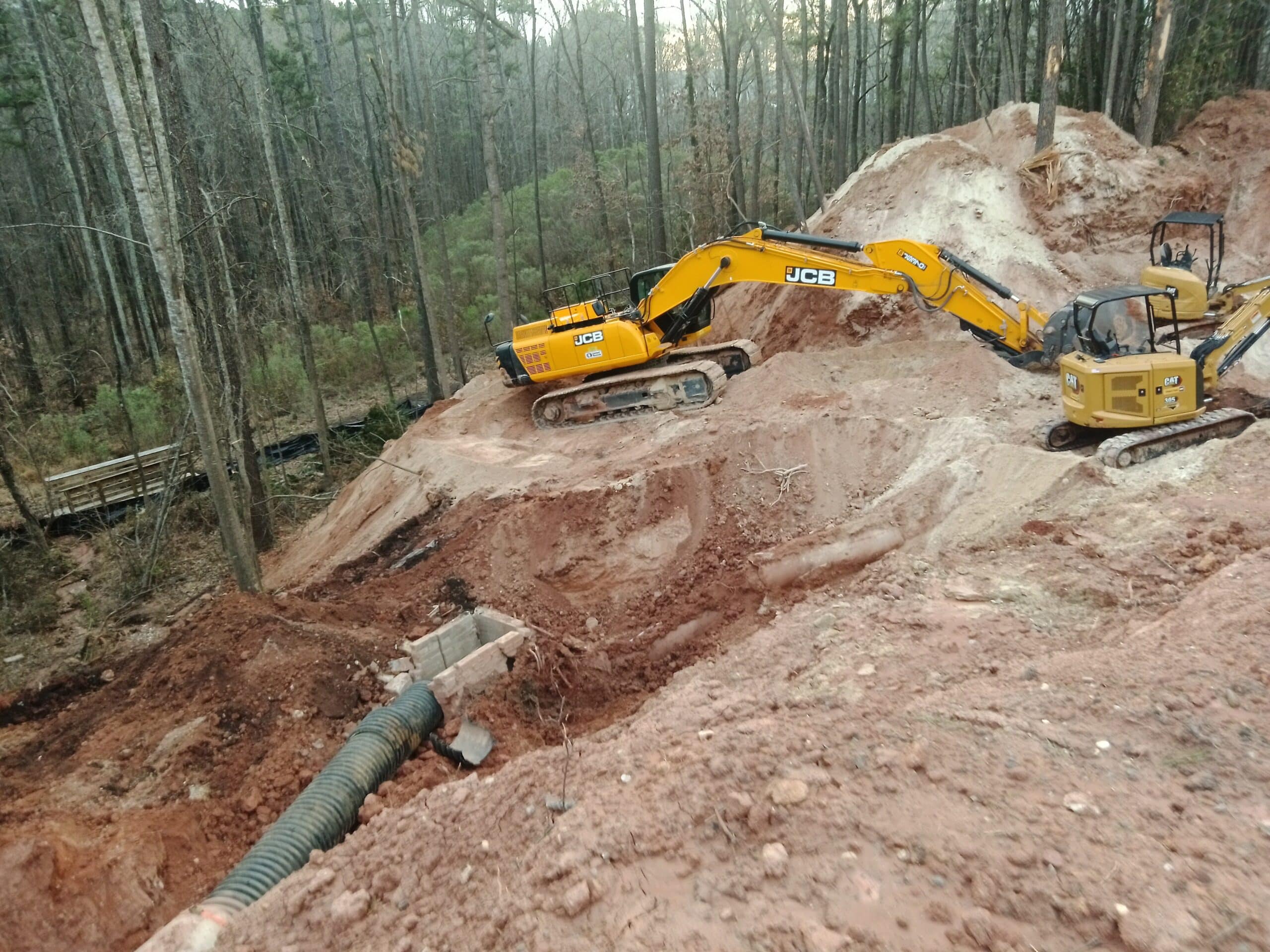
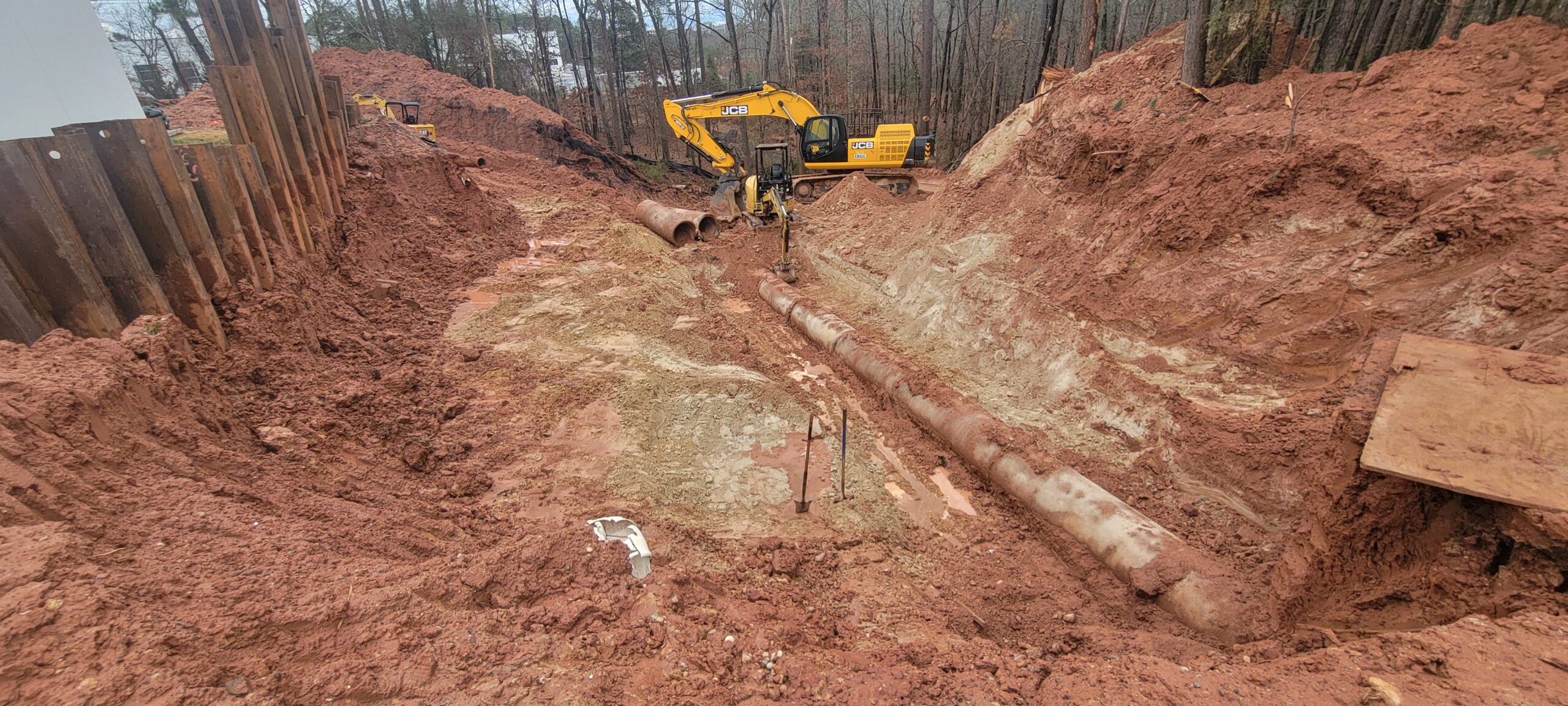
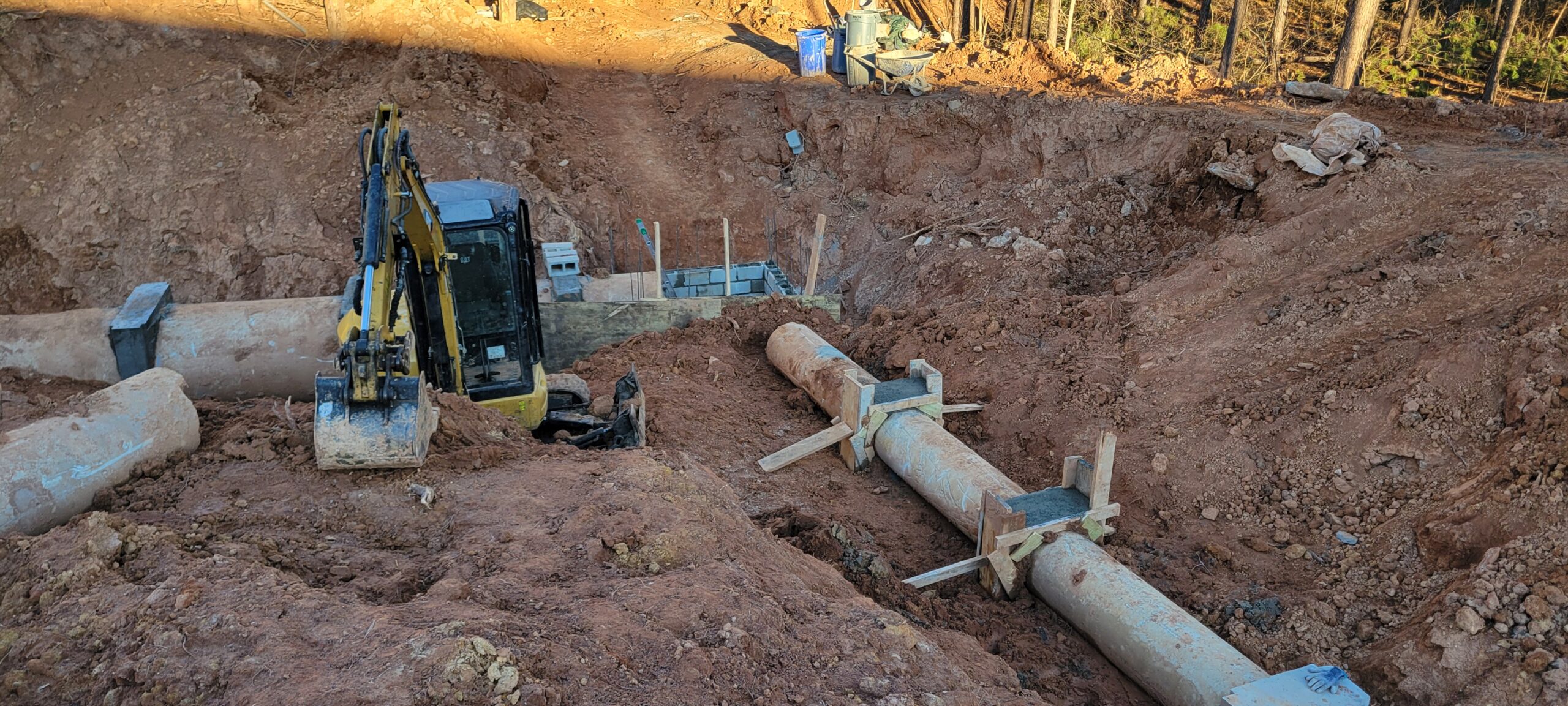




Before
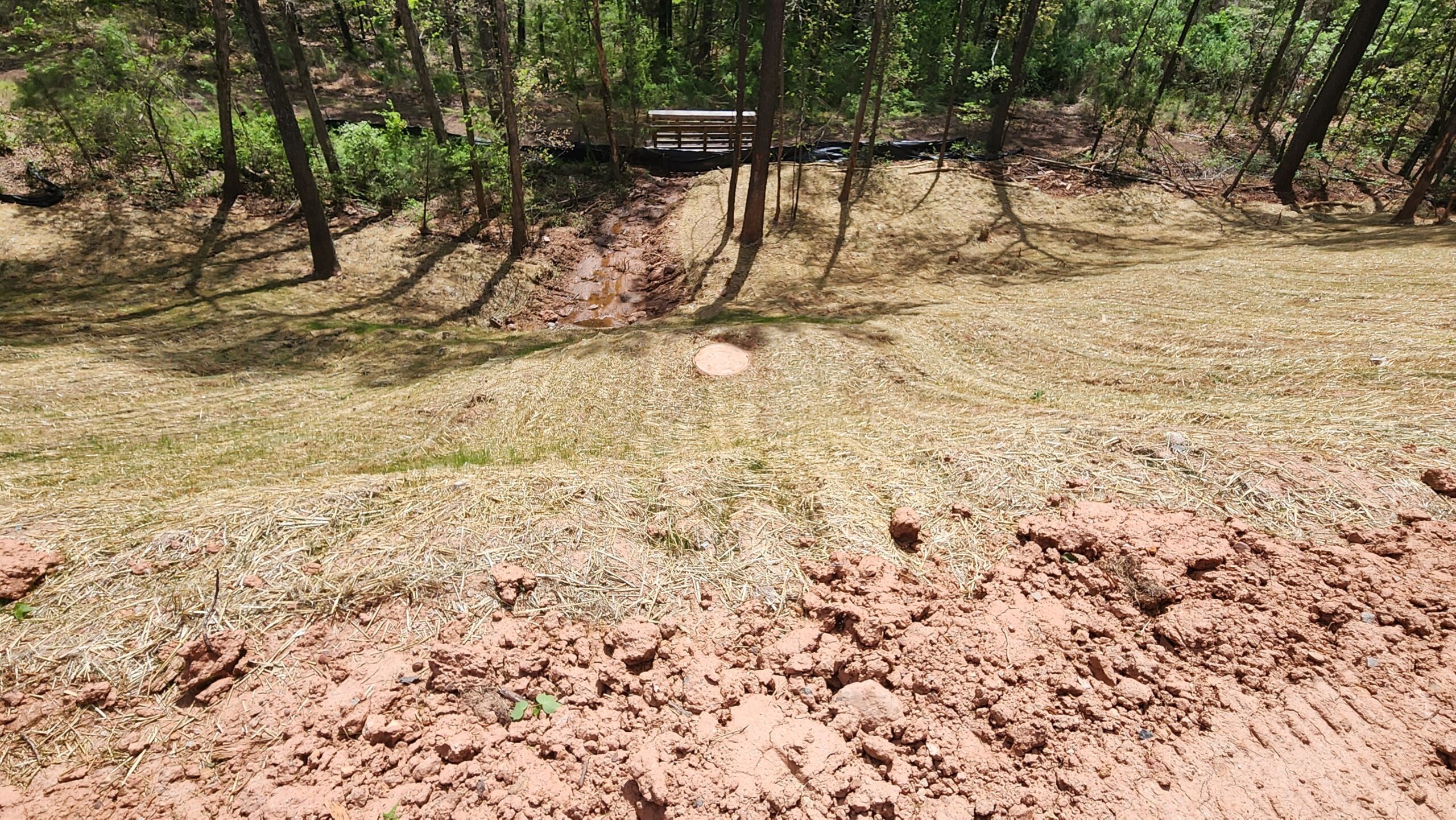
After
Solution:
To properly understand a property, it is imperative to consult the original site plans created before the construction of the site. Unfortunately, they aren’t always available and in this case they were not. The compromised area at this site included two junction boxes, 70 feet of concrete pipe ranging from 18-36 inches and a concrete headwall.
Due to the geological surveys, it was clear the site required excavation as the stormwater system was constructed on soft sediments and unsuitable soils. AQUALIS installed all necessary construction BMPs (best management practices) to prevent further sedimentation of the area during construction. The mature trees could then be removed to allow for heavy machinery to enter the site. This was required as the trees were compromising the area and infrastructure below. With the heavy machinery mobile, excavation could begin. Removing tons of dirt from the slope to a staging area, the infrastructure was exposed to properly assess the damage. In conversation with the external engineers and the property owners, it was decided one junction box and the connected pipes needed replacement. The remaining headwall and junction box were damaged but could be repaired without full replacement.
AQUALIS established bypass lines for the stormwater system to maintain functionality throughout the repair. The concrete pipeline was severely eroded, leaving large holes as it collapsed. The original junction boxes were created from brick. While this may have been an approved method in the mid-80’s when the system was originally developed, it is no longer recommended as cast-in-place and/or pre-cast withstands overtime. The joints that originally connected the pipeline and the junction boxes had failed. The failed junction box was removed, and the new junction box was cast in place using concrete. The second junction box was repaired and reinforced with grout and concrete. The new pipeline was then laid. Every joint of the pipeline was reinforced with additional concrete to prevent future seepage. The concrete headwall was then repaired.
Shoring was also required due to the proximity of the building to the construction area and the amount of soft soils found within the geophysical area around and underneath the building. The shoring prevents the building from sliding down the slope as the soils are volatile. Shoring is the process of installing large, prefabricated steel beams perpendicular to the surface to support the weight of the slope or excavation area. These steel beams are driven into the ground with a vibrational hammer and offer structural support, like a retaining wall. The depth of the piles is decided by the ratio of the slope and excavation area.
Once the structures were repaired and replaced, they could then be buried. Due to the unstable natural of the soil, over 600 cubic yards of supplemental soil was brought on site to offer additional stability and meet the suitable engineer fill requirements. Then, the soil was compacted to prevent future erosion.
Sinkholes are very dangerous, if you notice a sinkhole on your property immediately report it to the experts. Report any growing concave depressions, as this is a sign of soil displacement below. Underground infrastructure can fail quickly and should be regularly inspected to ensure property owners are informed of potential failures. Properly maintaining your stormwater assets can prevent large repairs as issues are caught early.
